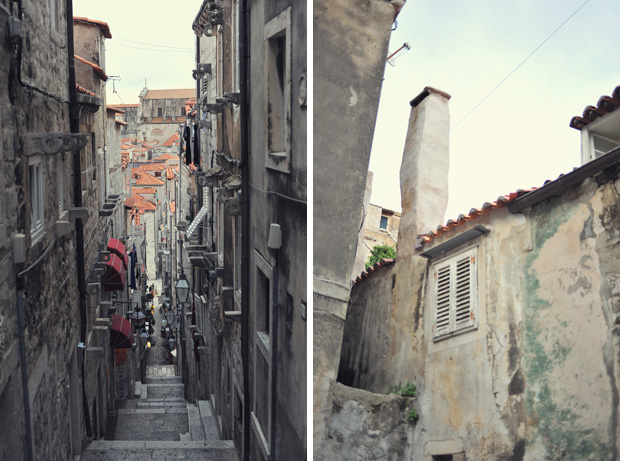Dubrovnik, 'The Pearl of the Adriatic', was definitely the highlight of our Croatia trip. Situated on the Dalmation coast, Dubrovnik became an important Mediterranean sea power from the 13th century on. Although it was severely damaged by an earthquake in 1667, Dubrovnik managed to preserve its beautiful Gothic, Renaissance and Baroque churches, monasteries, palaces and fountains. It was damaged again in the early 1990's in the Balkan conflict. On October 1, 1991 Dubrovnik was attacked by the Yugoslav People's Army with a siege of Dubrovnik that lasted for seven months. In May 1992 the Croatian Army lifted the siege and liberated Dubrovnik's surroundings, but the danger of sudden attacks by the Yugoslav People's Army lasted for another three years. During this period, many civilians fled the town and left their apartments and shops boarded up, hoping they'd still be there when they returned. They did their best to save the precious historic buildings by covering windows and fragile structures. Tourism stopped completely and the only people that walked the streets within the walls were soldiers. It is now the focus of a major restoration program co-ordinated by UNESCO. The old town of Dubrovnik is on UNESCO's list of world heritage sites. We checked out a memorial where we saw photos of fallen soldiers, watched old videos of the attacks, and looked at before and after photos of the town. Damaged parts of the city have since been restored and tourism is bigger than ever.
One of the first things we noticed about Dubrovnik were the stone walls that wind more than 3 km all the way around the old city. The bold walls give a feeling that this was a mighty city at one point. The walls are 80 feet high at some points, and run from 12 to 18 feet thick on the landward side but are much thinner on the seaward side. When entering through the walls, we crossed an old wooden drawbridge that used to go up every day, denying access to outsiders. Inside these walls sit apartments, shops, restaurants, and many churches, including the fifteenth-century Dubrovnik Synagogue, the second oldest in Europe.
The palace and city were in much better condition than what we saw recently in Split. We had a great time exploring the Old Town and all it's little allies and hidden passages. The streets have no organization. We've never seen so many stairs within a city center before! When you start the climb, the end is not even in sight. We tried to imagine how fit we'd be if we lived in an apartment that sits in the middle of the staircase. Whether you turn left or right out of the front door, you face stairs. The streets are about the width of hallways and go up and down with no warning, creating a giant maze. In the wider streets, most restaurants set up rows of tables for outdoor dining. It's incredible to see people living in something so old and amazing. You would think everything would be closed off but no, people go about their lives here as any other day, while we tourists stop and stare in awe at everything around us. Maybe if you've lived here all of your life, it'd be hard to appreciate something like this. We woke up at 7am one morning (very early for us since we've gotten used to sleeping in) just so we could go out to the water before the town woke up. The feeling of sitting on the side of an ancient castle wall with waves lapping on the stone under your dangling feet, no person in sight, book in hand, and your love sitting next to you is indescribable.
- Yuriy
Part II of our photos coming tomorrow.



























